Kiwhan Song
Selective Underfitting in Diffusion Models
Oct 01, 2025Abstract:Diffusion models have emerged as the principal paradigm for generative modeling across various domains. During training, they learn the score function, which in turn is used to generate samples at inference. They raise a basic yet unsolved question: which score do they actually learn? In principle, a diffusion model that matches the empirical score in the entire data space would simply reproduce the training data, failing to generate novel samples. Recent work addresses this question by arguing that diffusion models underfit the empirical score due to training-time inductive biases. In this work, we refine this perspective, introducing the notion of selective underfitting: instead of underfitting the score everywhere, better diffusion models more accurately approximate the score in certain regions of input space, while underfitting it in others. We characterize these regions and design empirical interventions to validate our perspective. Our results establish that selective underfitting is essential for understanding diffusion models, yielding new, testable insights into their generalization and generative performance.
History-Guided Video Diffusion
Feb 10, 2025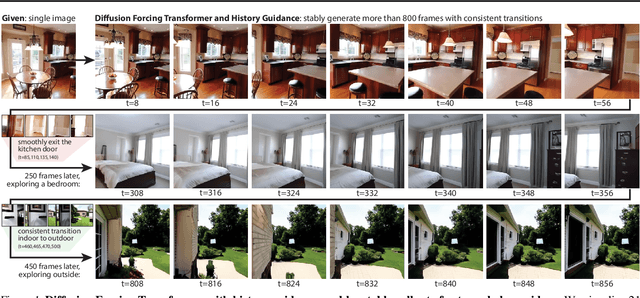
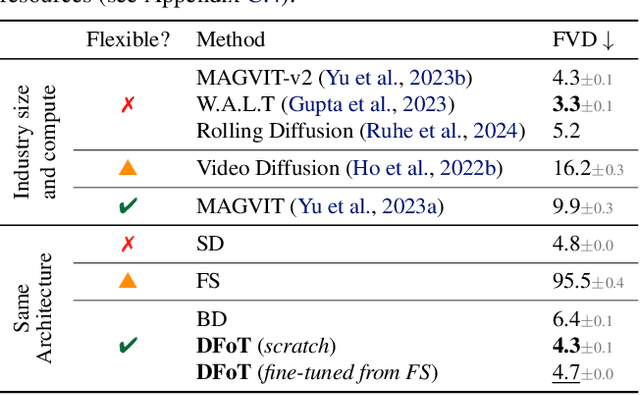

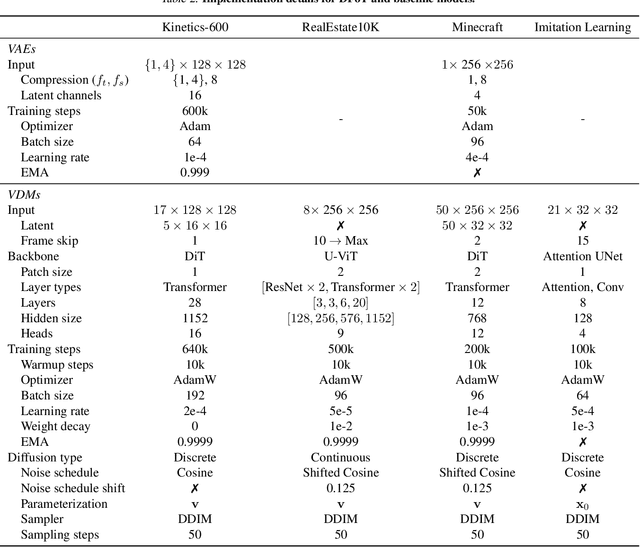
Abstract:Classifier-free guidance (CFG) is a key technique for improving conditional generation in diffusion models, enabling more accurate control while enhancing sample quality. It is natural to extend this technique to video diffusion, which generates video conditioned on a variable number of context frames, collectively referred to as history. However, we find two key challenges to guiding with variable-length history: architectures that only support fixed-size conditioning, and the empirical observation that CFG-style history dropout performs poorly. To address this, we propose the Diffusion Forcing Transformer (DFoT), a video diffusion architecture and theoretically grounded training objective that jointly enable conditioning on a flexible number of history frames. We then introduce History Guidance, a family of guidance methods uniquely enabled by DFoT. We show that its simplest form, vanilla history guidance, already significantly improves video generation quality and temporal consistency. A more advanced method, history guidance across time and frequency further enhances motion dynamics, enables compositional generalization to out-of-distribution history, and can stably roll out extremely long videos. Website: https://boyuan.space/history-guidance
Identifying Money Laundering Subgraphs on the Blockchain
Oct 10, 2024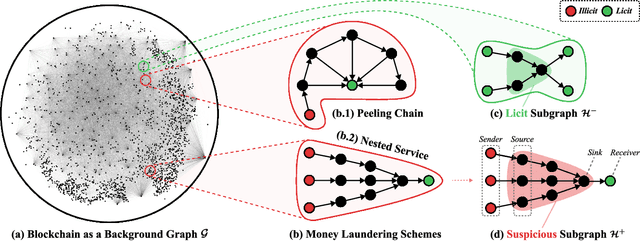

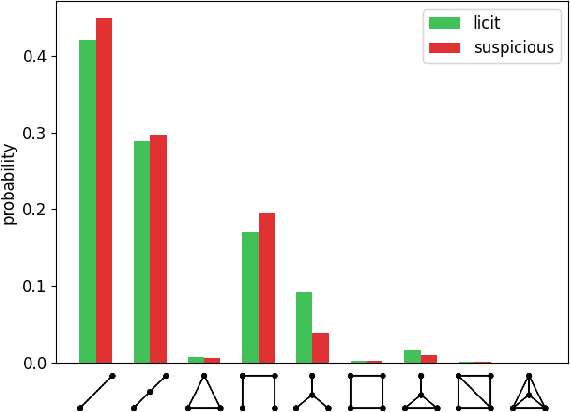

Abstract:Anti-Money Laundering (AML) involves the identification of money laundering crimes in financial activities, such as cryptocurrency transactions. Recent studies advanced AML through the lens of graph-based machine learning, modeling the web of financial transactions as a graph and developing graph methods to identify suspicious activities. For instance, a recent effort on opensourcing datasets and benchmarks, Elliptic2, treats a set of Bitcoin addresses, considered to be controlled by the same entity, as a graph node and transactions among entities as graph edges. This modeling reveals the "shape" of a money laundering scheme - a subgraph on the blockchain. Despite the attractive subgraph classification results benchmarked by the paper, competitive methods remain expensive to apply due to the massive size of the graph; moreover, existing methods require candidate subgraphs as inputs which may not be available in practice. In this work, we introduce RevTrack, a graph-based framework that enables large-scale AML analysis with a lower cost and a higher accuracy. The key idea is to track the initial senders and the final receivers of funds; these entities offer a strong indication of the nature (licit vs. suspicious) of their respective subgraph. Based on this framework, we propose RevClassify, which is a neural network model for subgraph classification. Additionally, we address the practical problem where subgraph candidates are not given, by proposing RevFilter. This method identifies new suspicious subgraphs by iteratively filtering licit transactions, using RevClassify. Benchmarking these methods on Elliptic2, a new standard for AML, we show that RevClassify outperforms state-of-the-art subgraph classification techniques in both cost and accuracy. Furthermore, we demonstrate the effectiveness of RevFilter in discovering new suspicious subgraphs, confirming its utility for practical AML.
 Add to Chrome
Add to Chrome Add to Firefox
Add to Firefox Add to Edge
Add to Edge